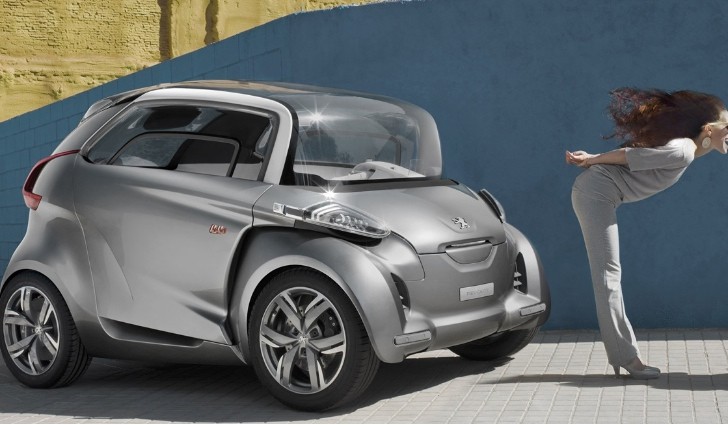In an ideal (or maybe idealistic) world, good ideas should always be promoted. That's only half the truth though. They do need a helping hand, but only at the right time and place in order to become profitable.
In 2009, Peugeot decided to unveil a small (really small!) electric car at the Frankfurt Motor Show. It was called the BB1 after motorized bikes from the 60s and was supposed to enter production. At 2.5 meters long, it would not only have been a great alternative to the smart fortwo, but also the Renault Twizy.
Here's how the French described it at the time: "With the Peugeot BB1 Concept car, Peugeot has fearlessly pushed back the conventions and boundaries of automobile manufacturing to bring a totally original response to the current and future needs of urban mobility."
Before the time of the Tesla Model S, the concept was surprisingly well received. And here we are in the era of electric car with no battery-powered toy lion to dart around the city with. Did they suddenly get cold feet?
Using the magical power of hindsight, we could say that Renault's plans for a Zero Emissions family of vehicles was perhaps too ambitious. Excluding of the Twizy, none of their electric vehicles captured people's imaginations enough to justifty their construction. But if the Twizy was the one to build, why didn't Peugeot try to make electric va va voom happen?
It's simple, actually. From 2009 until about mid 2013, the lion brand was among the European automakers hardest hit by the economic downturn. What's more, the BB1 was to be built on a shortened and widened Mitsubishi i platform, basically the same one as the slow-selling iOn electric car.
Power was supposed to come from two electric motors developed in collaboration with Michelin and mounted right inside the rear wheels. At the time, Peugeot claimed 0 to 30 km/h in 2.8 seconds and from 30 to 60 km/h in 4 seconds. A 7.5 kW battery would provide a maximum range of 120 kilometers per full charge. Now that doesn't sound like a lot, but remember this was created half a decade ago.
Here's how the French described it at the time: "With the Peugeot BB1 Concept car, Peugeot has fearlessly pushed back the conventions and boundaries of automobile manufacturing to bring a totally original response to the current and future needs of urban mobility."
Before the time of the Tesla Model S, the concept was surprisingly well received. And here we are in the era of electric car with no battery-powered toy lion to dart around the city with. Did they suddenly get cold feet?
Using the magical power of hindsight, we could say that Renault's plans for a Zero Emissions family of vehicles was perhaps too ambitious. Excluding of the Twizy, none of their electric vehicles captured people's imaginations enough to justifty their construction. But if the Twizy was the one to build, why didn't Peugeot try to make electric va va voom happen?
It's simple, actually. From 2009 until about mid 2013, the lion brand was among the European automakers hardest hit by the economic downturn. What's more, the BB1 was to be built on a shortened and widened Mitsubishi i platform, basically the same one as the slow-selling iOn electric car.
Power was supposed to come from two electric motors developed in collaboration with Michelin and mounted right inside the rear wheels. At the time, Peugeot claimed 0 to 30 km/h in 2.8 seconds and from 30 to 60 km/h in 4 seconds. A 7.5 kW battery would provide a maximum range of 120 kilometers per full charge. Now that doesn't sound like a lot, but remember this was created half a decade ago.































